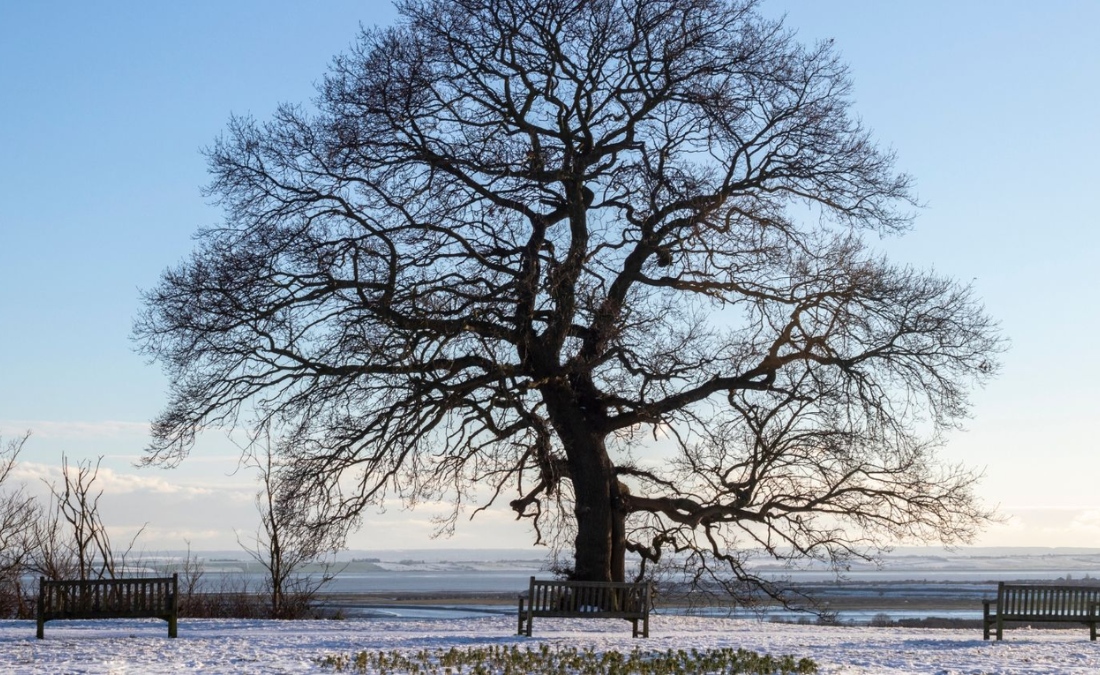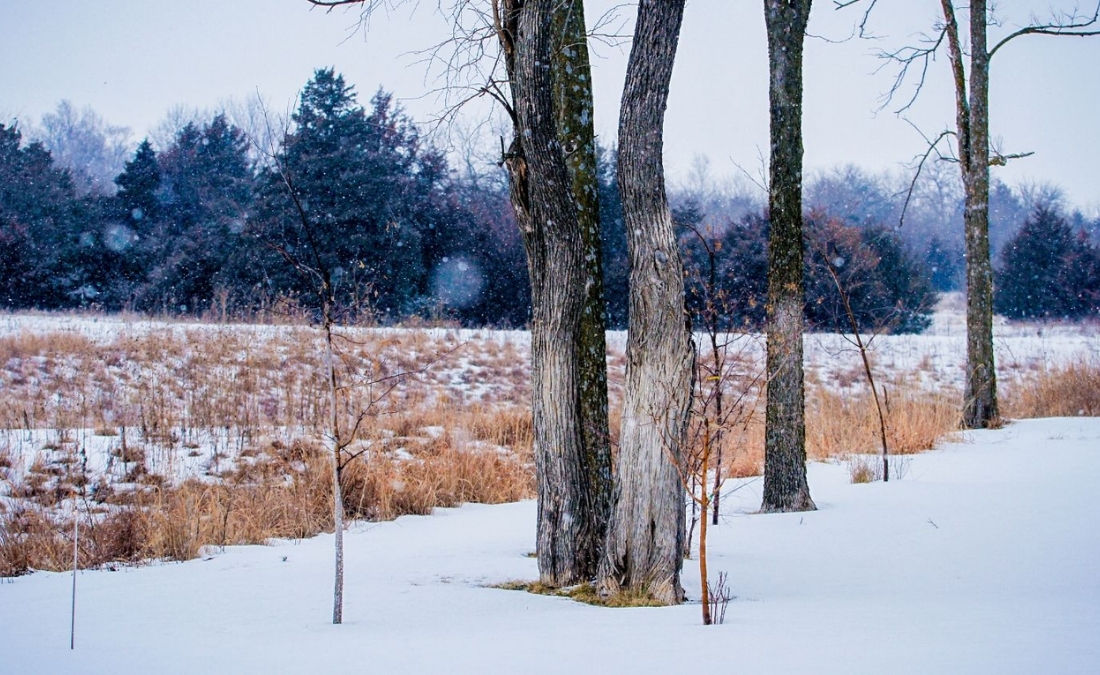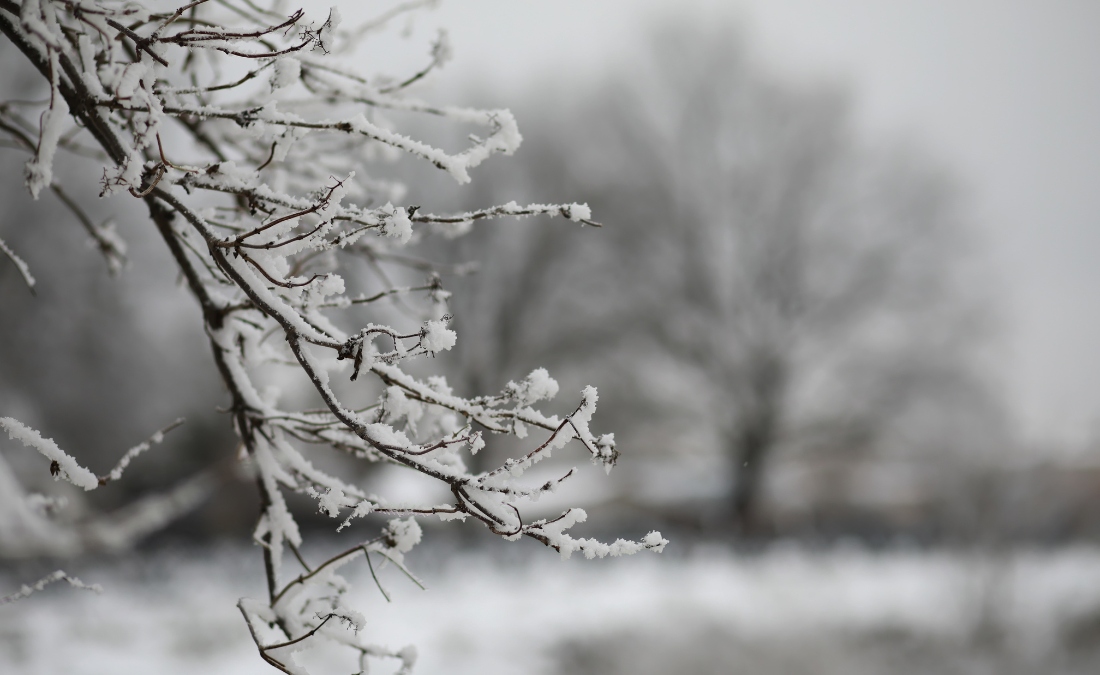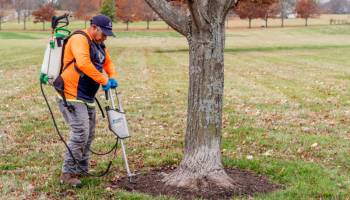5 Reasons Why Your Tree’s Leaves Are Turning Yellow During Summer
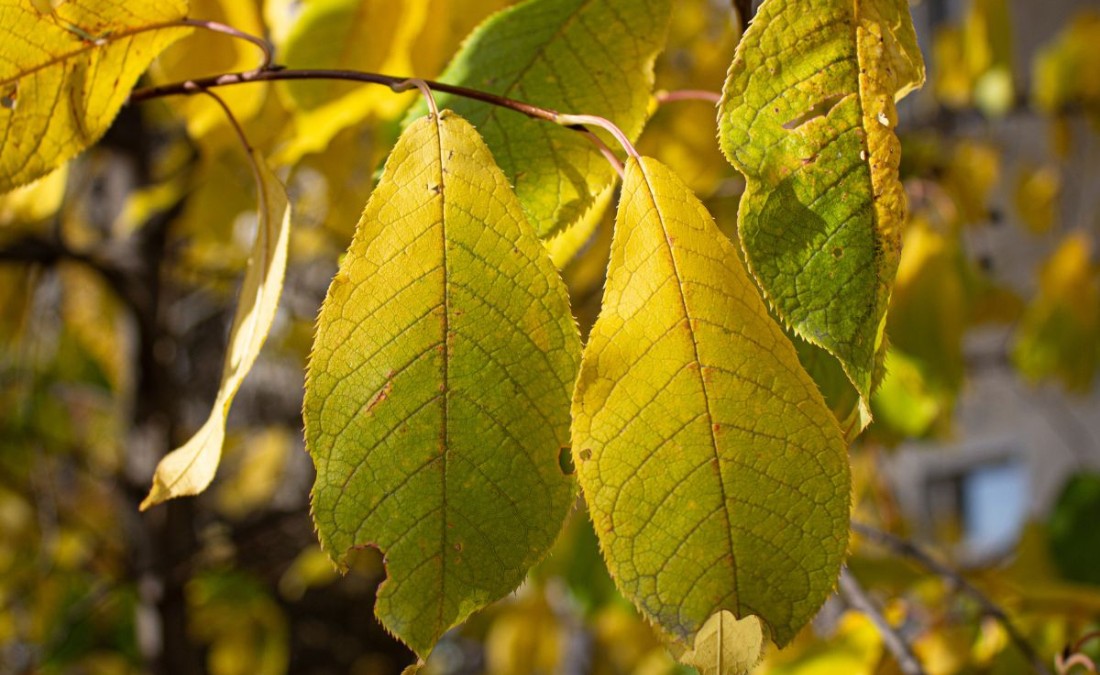
Concerned about yellow leaves on your trees this summer? Learn the 5 main causes affecting Kansas City area trees and when to call for professional help.
It’s the height of summer in Kansas City, and you’ve started noticing yellow leaves scattered across your lawn – even though it’s barely past the Fourth of July. While trees should be thriving this time of year, yellowing leaves are often a sign of stress. Understanding why it’s happening is the first step to protecting your trees.
Key Takeaways
- Heat stress is a leading cause of summer leaf yellowing in Kansas City, especially during prolonged periods above 90°F.
- Both overwatering and underwatering can trigger leaves to turn yellow, making it difficult to diagnose and treat.
- Compacted soil and poor drainage in clay soils often contribute to root problems that manifest as yellow leaves.
- Summer pests and diseases target heat-stressed trees, making them more vulnerable to leaf yellowing.
- Early intervention by a Certified Arborist can prevent permanent damage and help trees recover.
Tree Stress That Causes Yellow Leaves in Summer
Some light leaf yellowing is normal for trees in Kansas City, especially conifers like pine and fir, which naturally shed older interior needles through summer and fall. But if you’re seeing yellow leaves on your deciduous trees, it’s often not seasonal changes at all – it’s stress.
Some signs your tree may be in trouble include:
- Newer leaves at the branch tips turning yellow
- Entire sections of the canopy yellowing simultaneously
- Leaf drop happening rapidly over just a few days
These symptoms usually point to one or more stress factors that impact your tree’s health. Below are the most common summer stressors and what you can do to help your trees.
1. Heat Stress
Heat stress tops the list of reasons why tree leaves turn yellow in summer, especially during our July and August heat waves. When temperatures consistently reach 95°F or higher, trees struggle to maintain their normal physiological processes.
During extreme heat, trees can’t move water from their roots to their leaves fast enough to keep up with water loss through transpiration, creating a moisture deficit that triggers a breakdown of chlorophyll – the green pigment that gives leaves their color.
As chlorophyll degrades, yellow pigments become visible, and the tree begins dropping leaves to reduce its water needs. And when heat is coupled with humidity, trees cannot effectively cool themselves effectively through transpiration – pushing even mature trees and typically heat-tolerant species beyond their comfort zones.
Recognizing Heat Stress Vs. Other Problems
Heat stress yellowing has distinct characteristics that help differentiate it from other issues, such as:
- Yellowing starts on the sun-exposed side of the tree
- Leaf edges may appear scorched or brown
- Yellowing progresses during the hottest part of the day
- Trees may wilt during afternoon hours but recover overnight
- Symptoms worsen during consecutive hot days
When it’s not just heat stress:
- Yellowing occurs in shaded areas first
- Leaves show spots, holes, or unusual discoloration
- Yellowing happens during moderate temperatures
- Tree fails to recover during cooler evening hours
- Symptoms appear alongside pest activity or fungal growth
2. Watering Mistakes
Ironically, many homeowners unknowingly cause yellow leaves when they try to help by providing more water during hot weather.
However, both overwatering and underwatering can trigger leaf yellowing – and with similar symptoms, it can be quite challenging to not only know which condition you’re dealing with, but also which solution will be the most effective.
Overwatering Problems
Overwatering is surprisingly common among concerned homeowners who see their trees struggling in the heat. However, when soil stays constantly saturated to the point of standing water surrounding the trunk, tree roots can’t access the oxygen they need to function properly.
This leads to root rot, which prevents the tree from absorbing nutrients even when water is abundant, resulting in leaves turning yellow and dropping prematurely.
Underwatering Problems
Underwatering during heat waves creates obvious stress that may cause tree leaves to turn yellow, but the solution isn’t always straightforward. Shallow, frequent watering – a common mistake – encourages roots to grow near the surface where they’re more vulnerable to heat stress, creating a cycle where trees become increasingly dependent on frequent watering.
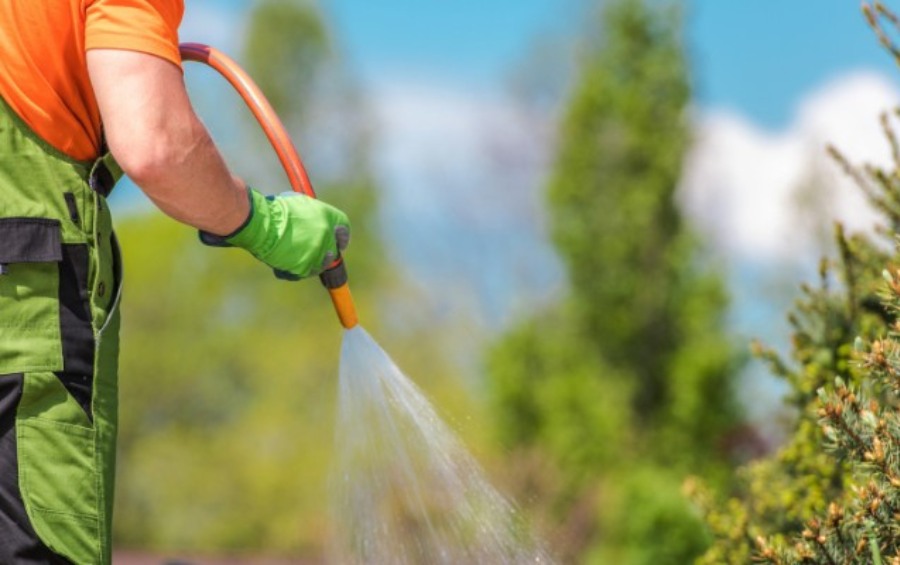
3. Soil or Root Issues
Kansas City’s expansive clay soils present unique challenges that often contribute to summer tree leaf yellowing. There are two main issues that can impact tree health and viability from the ground-level:
- Compacted Soil: When soil has been compressed, a tree’s roots are unable to access the water, oxygen, and other nutrients they need to survive. Even when you water appropriately, compacted clay can create waterlogged conditions near the surface while leaving deeper root zones dry. This inconsistent moisture stresses trees and triggers yellowing as they struggle to maintain proper hydration.
- Poor Drainage: Similarly, if water sits around tree roots for too long, it creates anaerobic conditions that kill fine feeder roots – the very roots trees depend on for nutrient uptake. Poor drainage issues are common in Johnson County’s clay-heavy soils, especially in areas with minimal slope or inadequate grading.
4. Summer Pests and Diseases
Heat-stressed trees become magnets for pests and diseases that can accelerate leaf yellowing. When trees are already struggling with high temperatures and inconsistent moisture, their natural defense mechanisms weaken, making them vulnerable to problems they might normally resist.
Common summer tree pests in the greater Kansas City area include:
- Bagworms: These pests create protective cases while feeding on foliage, causing yellowing and eventual defoliation if left untreated.
- Scale Insects: These insects thrive in hot weather and attach themselves to branches and leaves, sucking plant juices and causing yellowing, stunted growth, and premature leaf drop.
- Spider Mites: Often difficult to notice due to their small size, a heavy infestation of spider mites can cause stippling, yellowing, and eventual leaf bronzing that’s frequently mistaken for drought stress.
Similarly, trees can develop diseases and other issues when heat stress combines with humidity:
- Root Rot: Caused by excess water in the soil, this combination creates the perfect conditions for yellowing that usually starts from the inside of the canopy and progresses outward.
- Leaf Spot Diseases: These become more severe when trees are heat-stressed, causing yellowing around infected areas that eventually leads to premature leaf drop.
- Anthracnose: A common fungal disease that affects many plants and shrubs, anthracnose can flare up during humid summer periods, particularly affecting sycamores, oaks, and maples with yellowing and browning leaf patterns.
The key to managing summer pests and diseases is early detection and treatment. If you notice leaf yellowing accompanied by visible insects, webbing, spots, or unusual growths, contact a Certified Arborist for proper identification and treatment recommendations.
5. Nutrient Deficiencies
Nutrient deficiencies often become apparent during summer stress periods, when trees need optimal nutrition to cope with challenging conditions. The most common deficiency affecting your trees is iron chlorosis, though other nutrients can also play a role in summer leaf yellowing:
- Iron Chlorosis: Due to our alkaline soils and a higher pH level, iron is chemically unavailable to trees even when it is present in the soil. This deficiency shows up as yellowing between leaf veins while the veins themselves remain green – a distinctive pattern called interveinal chlorosis.
- Nitrogen Deficiency: Typically affecting older leaves first, a nitrogen deficiency turns leaves completely yellow without the green veining pattern that signifies iron chlorosis.
- Potassium Deficiency: Often accompanied by stunted growth and increased susceptibility to heat stress, a potassium deficiency causes yellowing and browning around leaf edges.
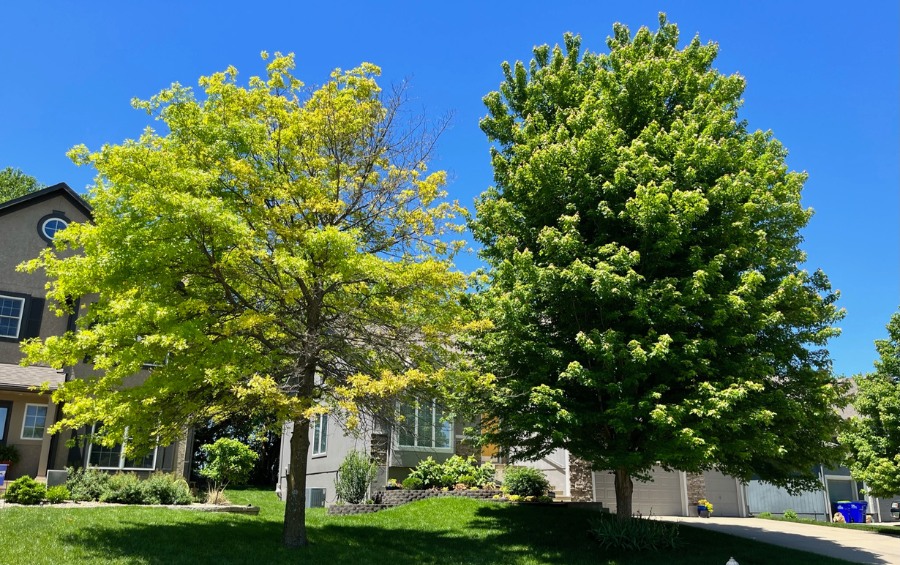
A comparison between a tree suffering from iron chlorosis (left) and a healthy tree (right).
How to Help Your Trees Recover from Yellow Leaves and Summer Stress
The good news is that trees showing leaf yellowing during summer can often recover with proper care, especially when problems are caught early. Your response strategy should address both immediate relief and long-term tree health.
Immediate steps for stressed trees:
- Adjust Watering Practices Immediately: If you’ve been watering daily, switch to deep, infrequent watering sessions. Apply water slowly over 30-60 minutes to ensure it penetrates clay soils rather than running off.
- Apply or Refresh Mulch: Focus on the tree’s drip line, maintaining a two to three inch depth but keeping mulch away from the trunk. This helps regulate soil temperature and retain moisture during heat waves.
- Avoid Fertilizing: During stress periods, avoid any kind of fertilization. Fertilizer encourages new growth that the tree can’t support when it’s already struggling with basic survival.
- Remove Grass and Weeds: Clear away plants growing near your tree, as they compete for water and nutrients. Instead, add mulch around the base, extending to the drip line if possible.
The most important thing you can do for a stressed tree exhibiting yellow leaves in the summer is contact a team of professional Certified Arborists. Whether your tree needs a deep root fertilization service, systemic treatment for pests and diseases, or a general plant health care program, a professional arborist is armed with the tools and training to help your tree recover.
FAQs About Tree Leaves Turning Yellow in the Summer
Here are some of the most common questions we see about why leaves turn yellow in the summer:
Is it normal for oak trees to drop yellow leaves in July?
Yes, oaks naturally shed some inner leaves during July heat as a water conservation strategy. However, if your tree is dropping large quantities of leaves or yellowing affects newer growth, this indicates stress that needs attention. Healthy oaks should maintain most of their canopy despite some normal leaf drop.
How much should I water my trees during Kansas heat waves?
Established trees need one to two inches of water per week through deep, infrequent sessions rather than daily watering. Water early morning, apply slowly over 30-60 minutes at the drip line, and limit to twice weekly maximum. Overwatering during heat waves can be just as damaging as underwatering in our clay-laden soils.
Can yellow leaves turn green again if I fix the problem?
Unfortunately, leaves that have already turned yellow cannot return to green once chlorophyll breaks down. However, addressing the underlying problem prevents further yellowing and helps new growth emerge healthy. Focus on correcting watering, soil conditions, or nutrient issues to support future leaf development.
When should I call a Certified Arborist about yellow leaves?
Call in a professional when:
- Yellowing affects more than 25% of the canopy
- The yellowing progresses rapidly
- Yellow leaves are accompanied by other symptoms like branch dieback
- Multiple trees are sporting yellow leaves
- Conditions do not improve after two to three weeks of adjusted watering

When Your Tree’s Leaves Turn Yellow in the Summer, Get Help from Arbor Masters
Yellow leaves on your trees don’t have to become a bigger problem. The earlier you address summer stress, the better the chances of helping your trees recover completely and avoid permanent damage.
Don’t spend another summer watching your trees struggle. A professional consultation can give you the peace of mind that comes with knowing exactly what your trees need – and a clear plan to get them healthy again. Contact Arbor Masters today at 913-441-8888 to get started today.

Get the latest local news, tree care tips, special offers, and company updates directly to your inbox! It's easy to subscribe and there's no spam - we promise.
"*" indicates required fields


